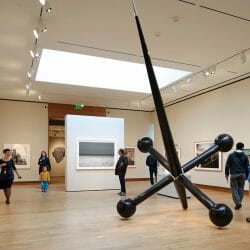Shakespeare’s First Folio

The UW’s Chazen Museum of Art will host an exhibition of the 1623 First Folio of Shakespeare’s plays, in honor of the 400th anniversary of the playwright’s death. Shakespeare First Folio, 1623. Folger Shakespeare Library
William Shakespeare may be known as the English language’s greatest playwright, but that description is far more accepted now than it was during the Bard’s era.
By some scholarly estimates, Shakespeare’s popularity was declining in the 17th century. Fortunately for posterity, his actor friends John Heminge and Henry Condell considered him important enough to collect nearly all of his plays and publish them in a single volume. The result is the 1623 First Folio, which contains 36 of Shakespeare’s plays — and some of the most famous lines in literature.
Without this collection, which features 18 plays that had never been printed before, many of his most beloved works, such as Macbeth, Julius Caesar, and The Tempest, could easily have been discarded as nothing more than scribbles on scraps of paper.
To commemorate the 400th anniversary of Shakespeare’s death, a copy of the First Folio will be displayed at the UW’s Chazen Museum of Art from November 3 to December 11. It’s part of a national traveling exhibit sponsored by the Folger Shakespeare Library in Washington, DC.
Scholars believe that about 750 copies of the First Folio were published; 233 exist today. The Folger library has the largest collection in the world: 82. Due to historical printing processes, each version is unique.
The book will be opened to Hamlet’s famous soliloquy — the one that begins, “To be, or not to be” — and will be accompanied by posters from around the world promoting Shakespeare’s plays.
For Michael Whitmore, director of the Folger library and a former UW–Madison English professor, the First Folio is best appreciated in person. “We’ve heard reports [at] other sites of people breaking down in tears in front of the book and proposing marriage,” he says.
Published in the Fall 2016 issue



Comments
No comments posted yet.